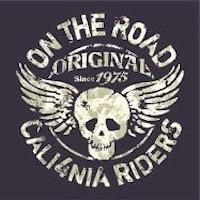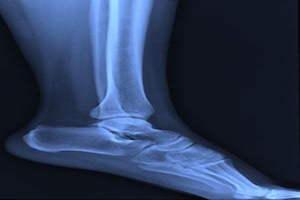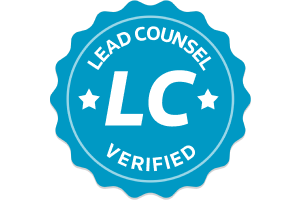for Over 25 Years
Motorcycle Accidents FAQs – Part 1
- Top 10 Motorcycle Safety Laws in California
- Why are Ankle Injuries so Common After a Bicycle or Motorcycle Accident?
- Why is it Important to Seek Prompt Medical Examination and Treatment and Legal Assistance Following an Ankle Injury from a Bike or Motorcycle Crash?
- What are the Odds of Getting into a Motorcycle Accident?
- How Many Motorcyclists are Injured Each Year?
- How Many Motorcyclists are Killed Each Year?
- What Causes Motorcycle Accidents?
- Who Causes Motorcycle Accidents?
- What are Some Safety Measures that Motorcyclists Can Take?
- What are Some Safety Measures that Other Motorists Can Take?
- What Should You Do if You are Injured in a Motorcycle Crash?
Top 10 Motorcycle Safety Laws in California

What are the top 10 motorcycle safety laws in California? As a California biker’s rights and safety advocate attorney, I thought I would explore this topic. Experiencing California via motorcycle is a great way to explore all that this great state has to offer. When it comes to safety on the open road, knowledge is key. In fact, being informed of and adhering to state laws and regulations can mean the difference between life or death. If you’re planning on cruising in the Golden State, here’s a quick look at its top 10 motorcycle safety laws.
- Helmets: According to Section 27803 of California’s Vehicle Code, both driver and passenger are required by law to wear a helmet at all times during the operation of the vehicle.
- Headlights: Unless the vehicle was manufactured before 1978, drivers must use a daytime headlight to increase their visibility in traffic. Regardless of the model year, headlights are mandatory after sunset.
- Handlebars: The height of the vehicle’s handlebars can be no more than six inches above the height of the driver’s shoulders when seated.
- Lane Splitting: As determined by the Highway Patrol, a two-wheeled vehicle may travel between lanes when the adjacent vehicles are traveling in the same direction.
- Safety Course: All riders under the age of 21 must complete the California Highway Patrol’s Basic Rider Course and provide their certificate of completion. Riders 21 and older are encouraged to take the safety course, but they may complete a skills test to be exempt from the class. For even more safety tips, the CHP offers the Premier Program, which consists of additional classroom and on-cycle hours.
- Earplugs: For the purpose of protecting against damaging noise levels, riders are permitted to wear earplugs as long as he or she can hear the horns or sirens of other vehicles.
- Safety Equipment: At least one mirror is required at the vehicle’s left or right side. An appropriate muffler is mandatory, and it cannot contain a bypass, cutout or related device. Working turn signals are also required by law.
- Passenger Regulations: A driver may only carry a passenger if there is proper seating at the rear or an attached side car that was built to accommodate passengers. Footrests must be provided for all riders, and they are required to rest their feet on them when the vehicle is in motion.
- Licensing: Depending on their type of motorized vehicle, all drivers must possess either an M1 or M2 license. Drivers must first be issued a permit to practice for the driving test, and riders 18 years and under must hold their permit for six months before obtaining a license.
- Towing: Any motorized vehicle pulling a trailer must remain at speeds lower than 55 MPH. It is unlawful to drive in carpool lanes, and on a four-lane highway, the vehicle must stay in the right two lanes or in the far right lane on a two-lane stretch.
While no more common than other vehicle accidents, motorized vehicle crashes are more likely to be serious or fatal. Accounting for more than half of all motorcycle-related deaths, crashes with other vehicles most often occur from the front. However, the condition that is most conducive to a dangerous collision is when surrounding cars are turning left. In most cases, the vehicle turning left is at fault, but if the motorcyclist was using the wrong lane or speeding, they may receive little to no compensation for damages or injuries. As for other types of accidents, serious injuries and death can occur through colliding with inanimate objects, speeding, not wearing a helmet and encountering various road hazards.
Contact a California Motorcycle Accident Attorney After any Crash Caused by Negligence of a Motor Vehicle Operator
Even if you comply with all safety laws and regulations and ride safe and defensively, many bikers in CA every year are injured or killed due to negligent operation of motor vehicles by other drivers. A well-educated and trained attorney familiar with motorcycle accidents can help you recover compensation for such damages or injuries. If you or a family member has suffered an injury or fatality caused by driver negligence, contact a California motorcycle accident attorney today.
Why are Ankle Injuries so Common After a Bicycle or Motorcycle Accident?

Ankle injuries along with ligament tears in and around the ankle are very common following a bicycle traffic incidents or motorcycle collisions for several reasons. To understand these common factors that cause damage to the lower leg and anklebone, you must first understand the following:
The Anatomy of the Bones and Ligaments in and Around the Ankle
The anklebones are made up of three main bones that form a union between the foot and the shin. These include the following: 1) the tibia is the largest bone in the lower part of the leg; 2) the fibula is the smaller of the two bones running along the shin and runs parallel to the tibia; and 3) the far ends of the tibia and fibula form the malleolus which connects to the top portion of the foot (the talus). These bones are all connected by three groups of ligaments that connect bone to bone and assist in the movement of the joints in and around the ankle. When there is a fracture of the tibia, fibula or talus or a tear of any of these joints, this can affect the mobility and function of the ankle and restrict the movement of the foot which can in turn inhibit simple tasks like standing or walking without the use of crutches or some other assistive device.
Ankle injuries can come in the form of fractures, ligament tears, or a combination of the two and are attributable to one main factor, namely, stress or traumatic impact to the joint. This happens when the joint is either extremely flexed or extended and/or from severe force being applied to the joints or bones. When only the ligaments give way to this trauma, you have a sprain or strain. When the bones give way, you have a fracture. When there is a combination of the two (as happens in many impacts related to bike and motorcycle crashes), this usually results in severe swelling of the leg, ankle and foot, pain coming directly from the site of fracture and from the surrounding area, black and blue bruising in or around the joint, and, in the most severe cases, the bone sticking out of the skin (so called “compound fractures”).
Why are the Anklebones and Ligaments in and Around the Ankle so Often Affected by Bike Accidents and Motorcycle Crashes
According to national accident statistics and data, approximately 87 percent of bicycle and motorcycle accident victims suffer injuries to their lower extremities including their legs, ankles and feet and lower extremity injuries were the most common injuries treated at trauma centers in the U.S. following a motorcycle collision. Tibia and fibula malleolar fractures were the most common of these injuries comprising 90 percent of all ankle injuries. (See U.S. Department of Transportation – National Highway Traffic Safety Administration Study: “Lower Extremity Injuries in Motorcycle Crashes” at p. 9). One of the main reasons for this is that, unlike a driver or passenger in a motor vehicle such as a car, the bicyclist or motorcycle rider’s extremities are not protected by a steel cage. In side impact collisions, the direct force of the vehicle strike can sometimes be on the lower leg itself or on the ankle or can cause the ankle to flex or extend in such a way as to tear ligaments or break bones. The other factor in play is the ejectment of the bicyclists or motorcycle rider from their bike which can cause an impact between the bones and ligaments of the ankle and the pavement or other roadway surface. Ankle injuries can also occur when the bike is “laid down” on its side which can come from both direct impact collisions and “near misses” which cause the biker to swerve and lose control.
Why is it Important to Seek Prompt Medical Examination and Treatment and Legal Assistance Following an Ankle Injury from a Bike or Motorcycle Crash?
Because the anatomy of the tibia, fibula, talus and malleolus and the surrounding joints and ligaments is so complex, fractures, tears or combinations of the two can be somewhat difficult to diagnose and sometimes slow to heal properly. The ankle is the main weight bearing joint for your entire body. You rely upon it to be able to stand, walk, run, jump, and perform the basic tasks required for many jobs and occupations, home chores, and simple day to day living. This makes it imperative to seek quality consultation with an orthopedic specialist following a bike ankle injury which will include x-rays at a minimum and may and often should include more comprehensive diagnostic studies like an MRI. It is important to fully ascertain the injury and the extent it will affect future mobility and the cost of present and future medical treatment for this type of severe injury. It is equally important to hire a qualified personal injury attorney familiar with bike and motorcycle ankle injury claims to obtain the best medical evidence of the present and future costs of treatment and obtain compensation accordingly. Otherwise, you may be left with lifetime physical consequences like arthritis and other conditions that are not accounted for and not fully compensated.
What are the Odds of Getting into a Motorcycle Accident?
California has great weather for motorcycle enthusiasts to enjoy year-round. People ride their motorcycles for recreation and as a means of faster and more affordable transportation to their jobs. Unfortunately, motorcyclists are much likelier to be seriously injured or killed in accidents than the occupants of other motor vehicles. There are some steps that you can take to help to minimize your risk of having a motorcycle accident as well as to reduce your chances of being injured or killed if you are involved in an accident.
How Many Motorcyclists are Injured Each Year?
According to data from the National Highway Traffic Safety Administration, 88,000 motorcyclists were injured in the U.S. in 2015 alone. This number was a decrease from the 92,000 motorcyclists who were injured in 2014. Various news sources, report that 14,400 motorcyclists in California were injured in 2016. Southern California is especially dangerous for motorcyclists.
How Many Motorcyclists are Killed Each Year?
Despite making up just 3 percent of the total number of motor vehicles that are registered, motorcyclists had six times the fatality rate per registered vehicle and 28 times the fatality rate per vehicle mile traveled in 2016. The NHTSA reports that 5,337 motorcyclists were killed in crashes in 2016. In 2017, the number fell to 5,172 motorcycle fatalities for an overall decrease of 3.1 percent in the U.S.
In California, 566 motorcyclists were killed in 2016, according to the report in the San Gabriel Valley Tribune. Overall, the motorcycle deaths that happened in the state accounted for 15.1 percent of the total fatalities for the year.
The odds of dying in a motorcycle collision are one in 770, according to data from the National Safety Council. These odds are the chances per person in the U.S.
What Causes Motorcycle Accidents?
Motorcycle accidents can be caused by a number of different factors. Some of the most common motorcycle accident collision scenarios include the following:
- Left turn accidents
- Unsafe lane changes
- Distracted driving
- Following too closely
- Speeding
- Inexperience
- Driving under the influence
One of the most frequently occurring types of motorcycle crashes occurs when motorists fail to notice motorcyclists who are oncoming and then turn left in front of them. These types of accidents frequently cause serious injuries to the motorcyclists or result in their deaths.
Motorists who make unsafe lane changes may cause accidents with motorcyclists. This is a problem in Los Angeles on the freeways. Motorists who abruptly change lanes without checking to see motorcyclists who are present in them may cause serious accidents.
Many accidents happen when the motorcyclists, the other motorists, or both are under the influence of alcohol or other drugs. Driving while intoxicated by alcohol or other substances is illegal and dangerous.
An increasing number of motorcycle accidents are caused by distracted drivers. Motorists who are talking on their phones, texting while driving, or engaging in other distracting activities while they drive place others at risk, including motorcyclists.
Speeding by motorcyclists and motorists alike can cause serious collisions. When people drive faster than the speed limit, they require a greater distance to slow down and may not have enough time to react in an emergency.
Finally, rear-end accidents may happen when motorists follow motorcycles too closely. This may occur because of aggressive driving or because the motorists fail to notice that traffic in front of them has slowed.
(For a comprehensive list of motorcycle accident scenarios, how to avoid them and California law on legal fault, click here).
Who Causes Motorcycle Accidents?
The Hurt Report was a comprehensive study and report about motorcycle crashes and their causes. According to its findings, the drivers of the other vehicles were at fault in 75 percent of the motorcycle collisions. This belies the common misconception held by many people that motorcyclists frequently are at fault for their own collisions. Other motorists are much likelier to violate the rights-of-way of the motorcyclists and cause the collisions than the motorcyclists are to violate the right-of-way of the motorists.
What are Some Safety Measures that Motorcyclists Can Take?
While you cannot completely eliminate your risk of being involved in a motorcycle accident, there are some things that you can do to increase your personal safety. You should never ride your motorcycle after you have been drinking or after using substances that impair you. You should follow all traffic safety laws such as speed limits and using turn signals. As a motorcyclist, it is important for you to watch out for vehicles that appear like they might be preparing to enter your lane or who might be getting ready to turn left from a side street. If you see signs that these actions might occur, slow down and be prepared to stop suddenly if you need to do so. Motorcyclists should also keep an eye out for road debris and slow down when the weather conditions demand it.
In addition to riding your motorcycle in a safe manner, you should also always wear safety gear. Choose a helmet that is certified as meeting DOT standards. You should also wear padded leather jackets with protection for your hands and legs. Finally, good motorcycle boots are important to help to reduce the risk of severe injuries to your feet in an accident. Safety gear can help to reduce the severity of injuries if you are struck by a car or truck and should be worn every time that you ride.
What are Some Safety Measures that Other Motorists Can Take?
There are a number of safety measures that other motorists can take to avoid causing motorcycle crashes. People who are preparing to turn left should check for motorcyclists before they pull out to turn. They should be careful not to misjudge the distance or speed of an oncoming motorist when they make turns.
Drivers should never use their cell phones while they drive. Even hands-free cell phones are distracting and can lead to accidents. It is best for drivers to turn their phones off and to put them away while they are behind the wheel. Drivers should check their mirrors and look over their shoulders before they make lane changes to make sure that a motorcyclist is not present in their blind spots. Finally, motorists should avoid speeding, following too closely, driving aggressively, and driving under the influence of alcohol or drugs.
What Should You Do if You are Injured in a Motorcycle Crash?
If you are seriously injured in a motorcycle crash or have lost a loved one, you should get legal help. Insurance companies often try to place the blame for motorcycle collisions on the motorcyclists even when the liability of the other driver seems clear. An experienced attorney can analyze what occurred and provide you with an honest evaluation of your claim. If the lawyer agrees to take your case, he or she may then conduct an in-depth investigation to strengthen your claim so that you may be likelier to reach a favorable resolution. To learn more, call the Law Offices of Steven M. Sweat today at 310-592-0445.












